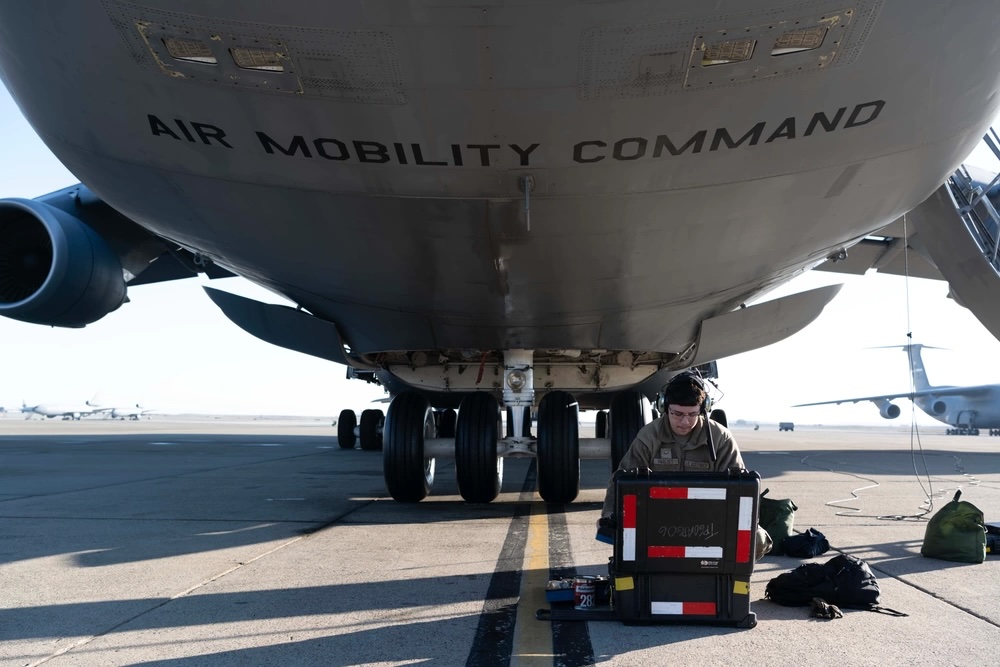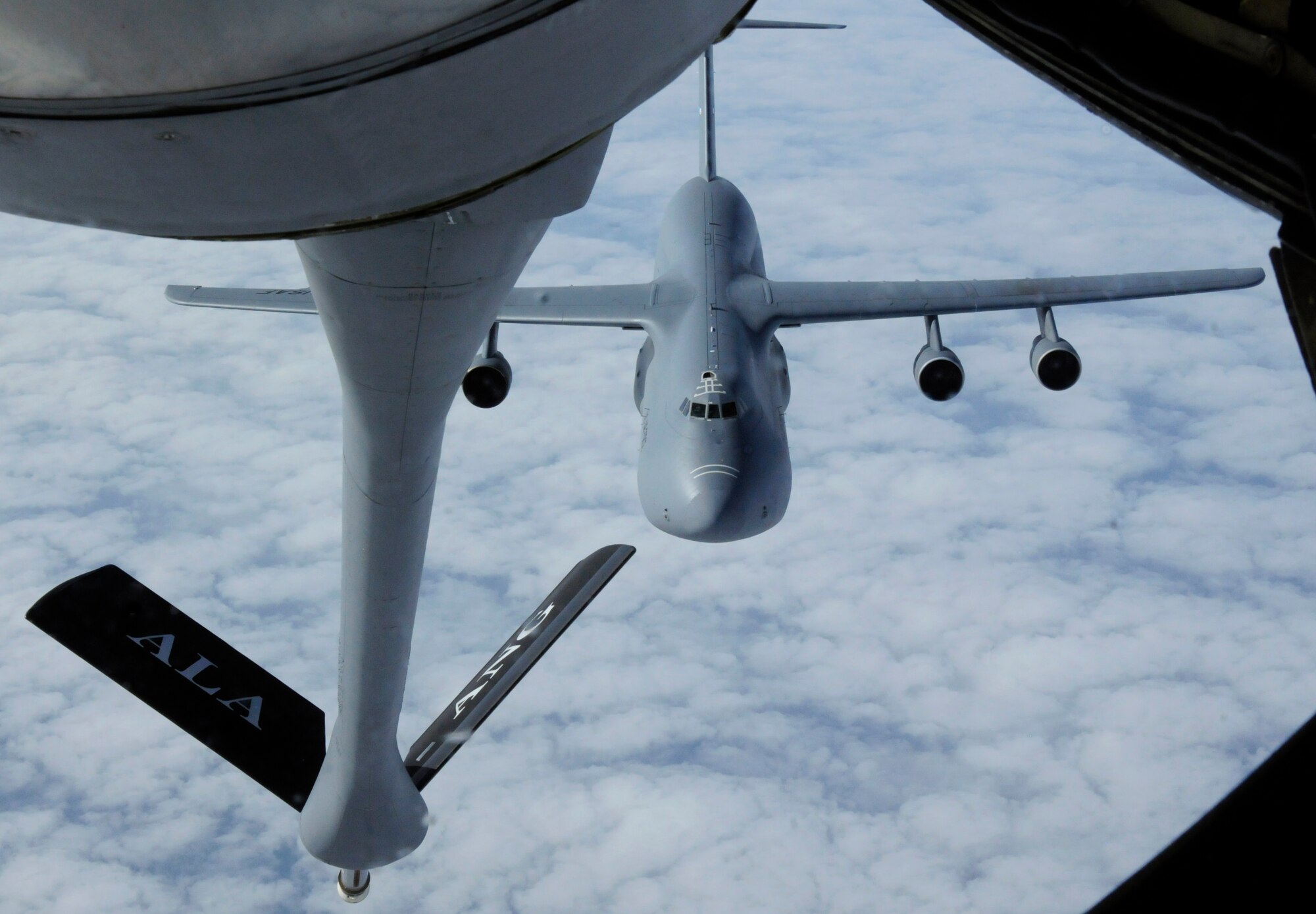Airmen have transformed a C-5 aircraft into a “huge floating gas station” through a groundbreaking refueling experiment. This innovative initiative showcases the military’s commitment to enhancing aerial refueling capabilities, using the massive C-5 aircraft to extend its role beyond traditional cargo transport to become a versatile inflight refueling hub. The experiment marks a significant advancement in military aviation capabilities, emphasizing adaptability and efficiency in air operations.

Photo from: Air & Space Forces Magazine
Sky-High Fueling Experiment
In a groundbreaking aerial maneuver, a crew at Travis Air Force Base executed reverse flow air refueling between a C-5M Super Galaxy and a KC-10 Extender tanker. This marked the first use of the technique with the C-5 since its 1960s inception, offering a novel perspective on the aircraft’s capabilities. The ambitious experiment aimed to explore the C-5M’s potential as a massive airborne gas station, a crucial aspect in extending the reach and endurance of aerial refueling tankers.
The Air Force’s exploration of unconventional tactics, like turning the C-5 into a refueling hub, is strategic. As military planners brace for potential conflicts, particularly in the vast Pacific, the ability to utilize a C-5 as a “huge floating gas station” becomes paramount.
The success of the operation implies that, in the future, a C-5 could efficiently ferry fuel to tankers, optimizing the deployment of tanker assets and enhancing their range and orbit time during critical missions.
READ ALSO: Airmen Turn C-5 Into ‘Huge Floating Gas Station’ with Refueling Experiment
Operational Challenges and Success
The reverse airflow refueling operation presented challenges for the crew, requiring precise coordination due to the shifting center of gravity as fuel flowed through the C-5. Despite these challenges, the mission was a triumph, with the C-5 offloading a substantial 23,500 pounds of fuel in approximately 30 minutes. While not aiming for efficiency comparisons, the experiment demonstrated the feasibility of the operation and showcased the adaptability and versatility of the C-5 aircraft.
This experiment is part of the Air Force’s broader initiative to explore unconventional applications of transport aircraft. Previous endeavors included C-17s and C-130s launching cruise missiles and transporting fuel to remote runways. The focus is on maximizing the utility of the Air Force’s fleet, ensuring adaptability in potential conflict scenarios. The successful reverse flow air refueling adds another dimension to the capabilities of the C-5M Super Galaxy, showcasing its versatility beyond traditional roles.
READ ALSO: B-1 Bombers Fly in Second Trilateral Exercise with Japan and S Korea
























